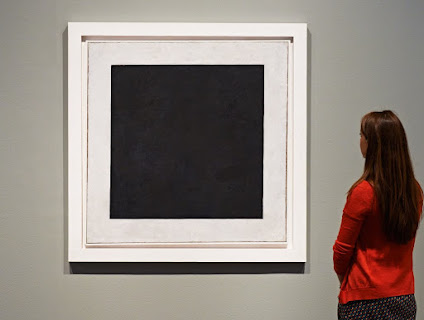Tracing the Roots of Abstract Art
Where did abstract art start?
Abstract art is a form of art that uses shapes, colors, forms, and gestural marks to create an effect, instead of trying to represent a visual reality. The roots of abstract art can be traced back to the late 19th century, with the work of artists like Vincent van Gogh and Paul Cézanne. These artists began to challenge traditional methods of representing reality in art, and instead focused on the expressive use of color and form. However, it wasn't until the early 20th century that abstract art truly came into its own. The rise of modernism and the influence of movements like Fauvism, Expressionism, and Cubism all played a role in the development of abstract art.
Kazimir Malevich is credited as the artist who created the first purely abstract painting in 1915 with his work "Black Square." This influential painting was a simple black square on a white background. Piet Mondrian's use of geometric shapes and primary colors was another defining factor in the abstract art movement. His compositions helped to establish the overall look of the style. Jackson Pollock's drip paintings were a breakthrough in how artists could approach the canvas, resulting in a more expressionistic style. Abstract art has continually evolved since its early beginnings, with countless artists finding new ways to explore the medium. Today, it is still a major force in the art world and a style I love to pursue in my own work.
I personally like to use the term Gestural Abstraction when referring to my own work and when nosey people need to know exactly what style I am painting.
What are the characteristics of Abstract Art?
As an abstract artist, I often get asked about my connection to the modernist movement. For me, modernism is about rejecting traditional methods of representation in art and instead embracing abstraction. I believe that abstract art can be its own form of communication, free from the constraints of realism.
Famous Abstract Artists
Abstract art is a truly fascinating area of the art world. Throughout history, there have been many renowned abstract artists who have made significant contributions to its development. Some of the most notable include:- Kazimir Malevich: Russian artist Kazimir Malevich created the first purely abstract painting in 1915 with his work "Black Square." This piece simply consisted of a black square on a white background and is recognized as a pivotal work in the history of abstract art.
- Piet Mondrian: Dutch painter Piet Mondrian is well-known for his use of geometric shapes and primary colors in his abstract paintings. His work was highly influential in the emergence of the De Stijl movement, which advocated for the incorporation of more abstract elements in art.
- Jackson Pollock: American artist Jackson Pollock became famous for his drip paintings, which were characterized by their chaotic and expressive style. His work was instrumental in shaping the Abstract Expressionist movement.
- Helen Frankenthaler: Helen Frankenthaler was an American painter known for her abstract landscape paintings, which used thin washes of color to create a sense of space and depth.
- Mark Rothko: Mark Rothko was an American artist known for his large, colorful abstract paintings, which often featured soft, atmospheric gradations of color.
- Clyfford Still: Clyfford Still was an American painter known for his large-scale, abstract expressionist paintings, which often featured jagged, chaotic brushstrokes and a limited color palette.
- Agnes Martin: Agnes Martin was an American painter known for her minimalist, abstract paintings, which often featured delicate lines and a limited color palette.
Interesting Facts about Abstract Art
- Abstract art has its origins in the late 19th century, but it didn't reach its full potential until the early 20th century with the advent of modernism.
- The first purely abstract painting is believed to be "Black Square" by Russian artist Kazimir Malevich, created in 1915.
- Abstract art is often associated with the modernist movement and a rejection of traditional methods of representation in art.
- Abstract art can be emotionally charged and can express feelings or ideas through the use of color, form, and other abstract elements.
- Abstract art is open to interpretation and can be seen differently by different people.
- Many famous abstract artists, including Piet Mondrian, Jackson Pollock, and Mark Rothko, have had a major influence on the art world and continue to inspire artists today.
- Abstract art can be found in a variety of mediums, including painting, sculpture, and even architecture.
- Abstract art can be extremely impactful, evoking strong emotions and reactions in viewers. It's a powerful and thought-provoking art form that encourages viewers to engage with the work on a personal level.


Comments
Post a Comment